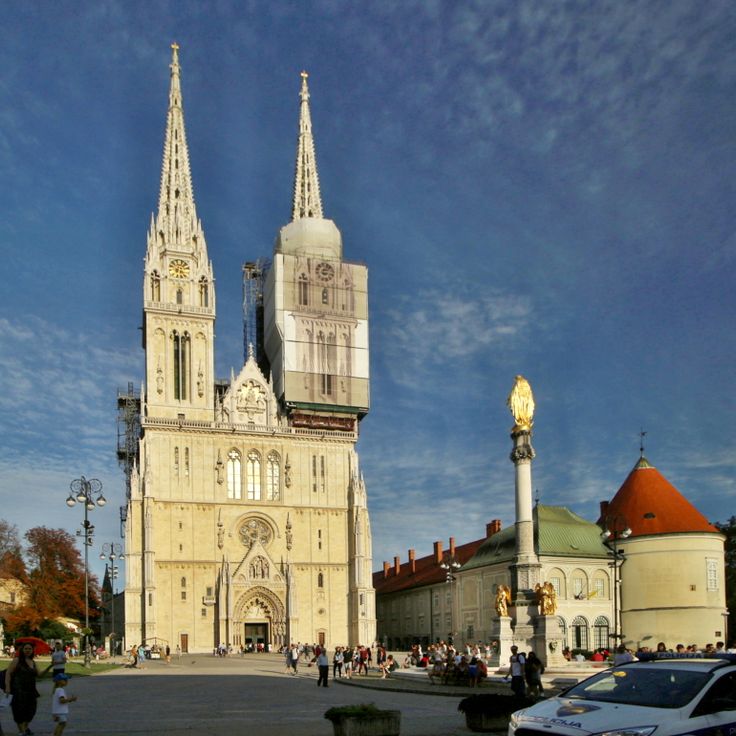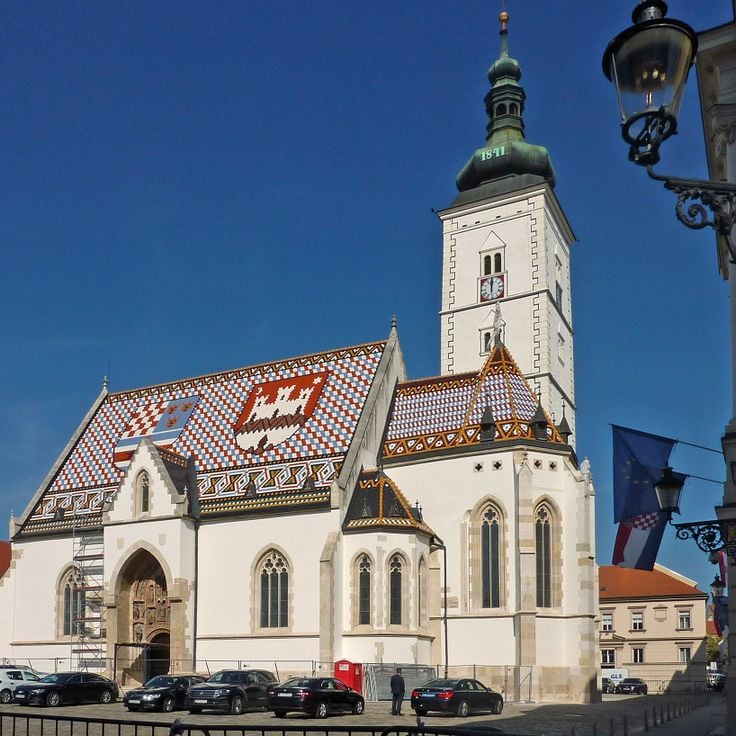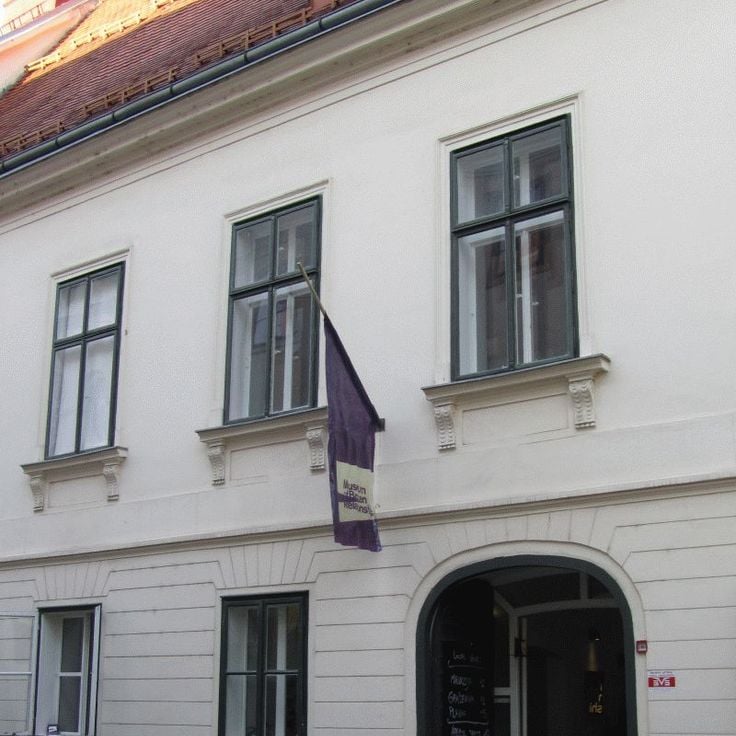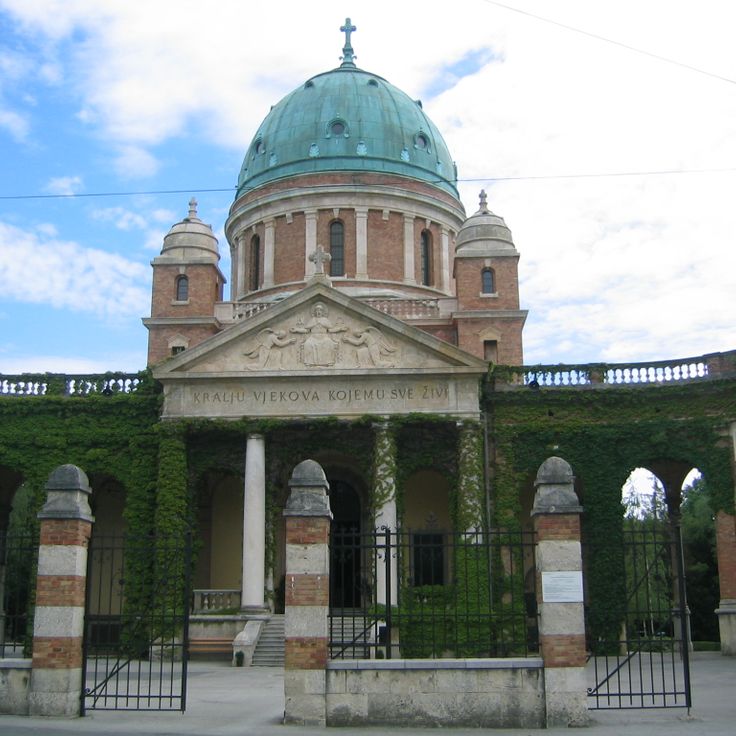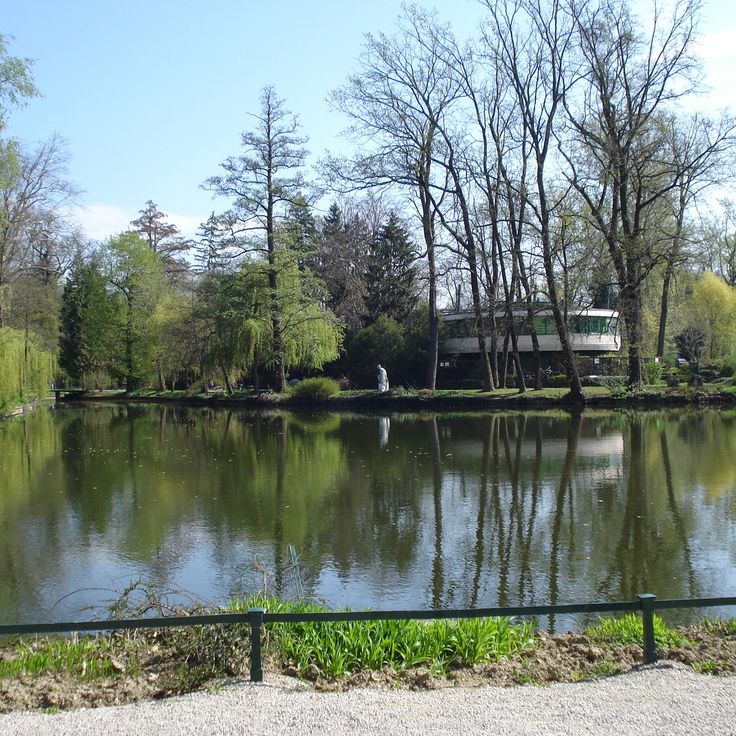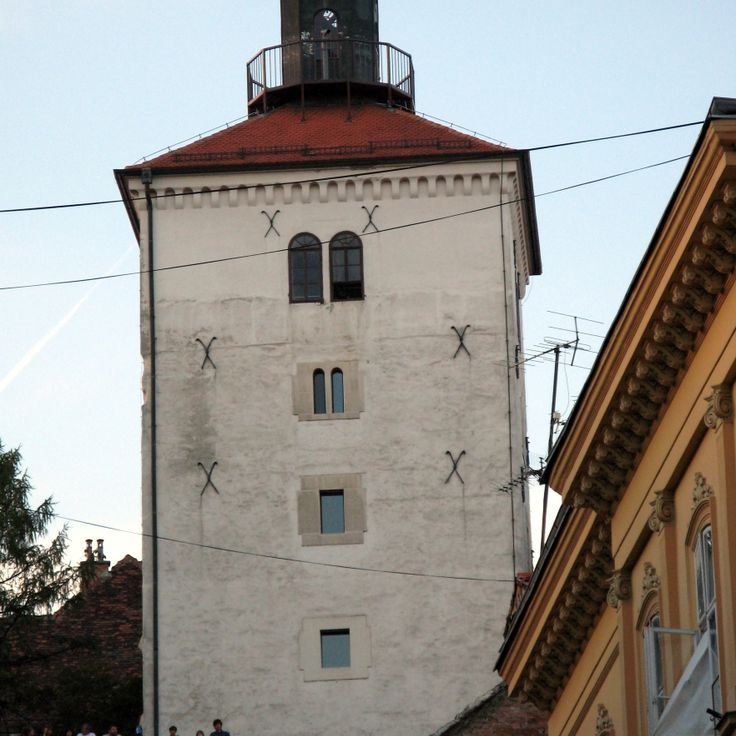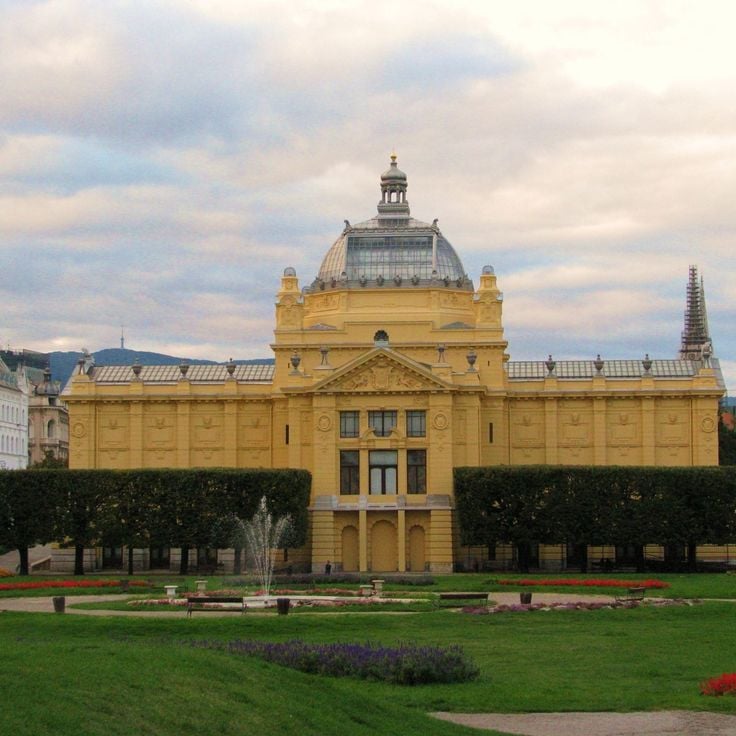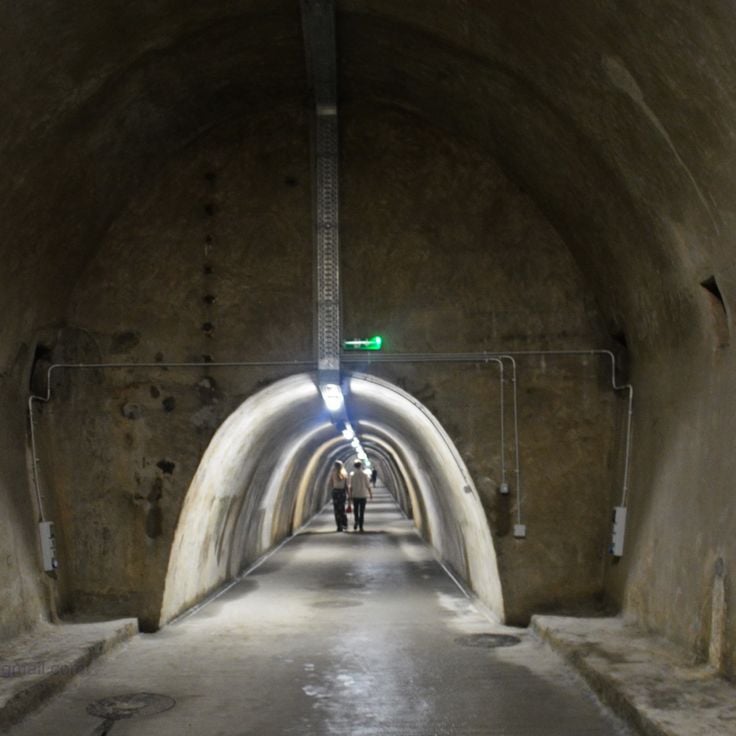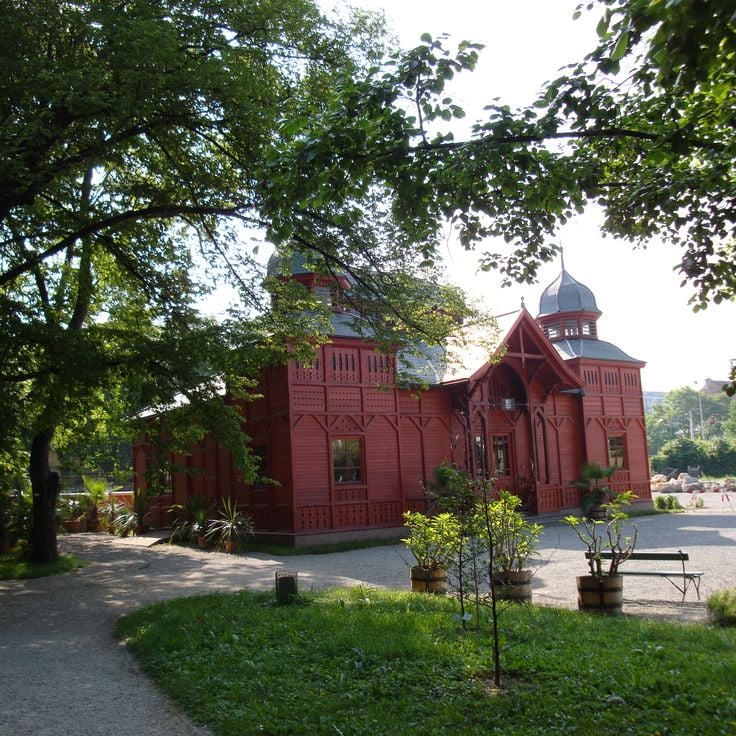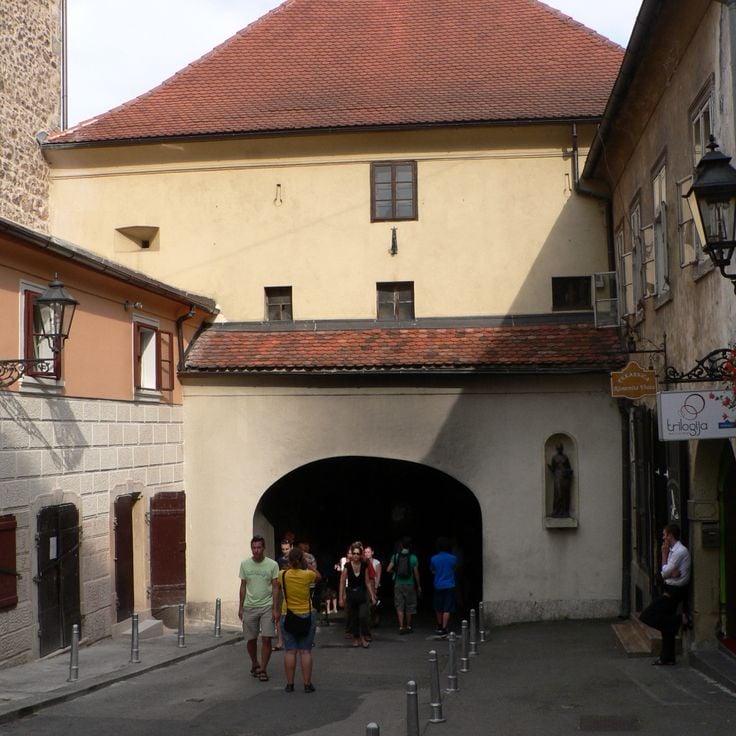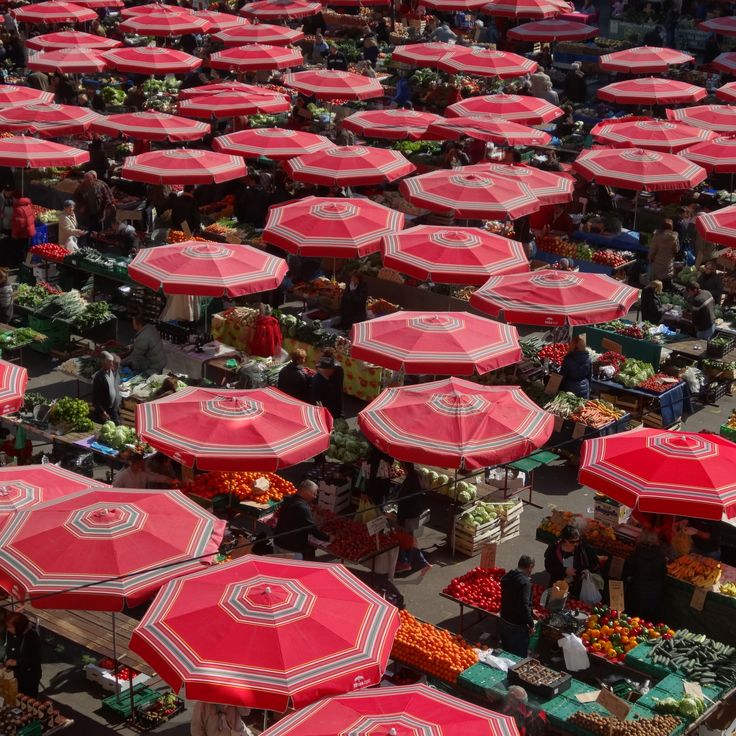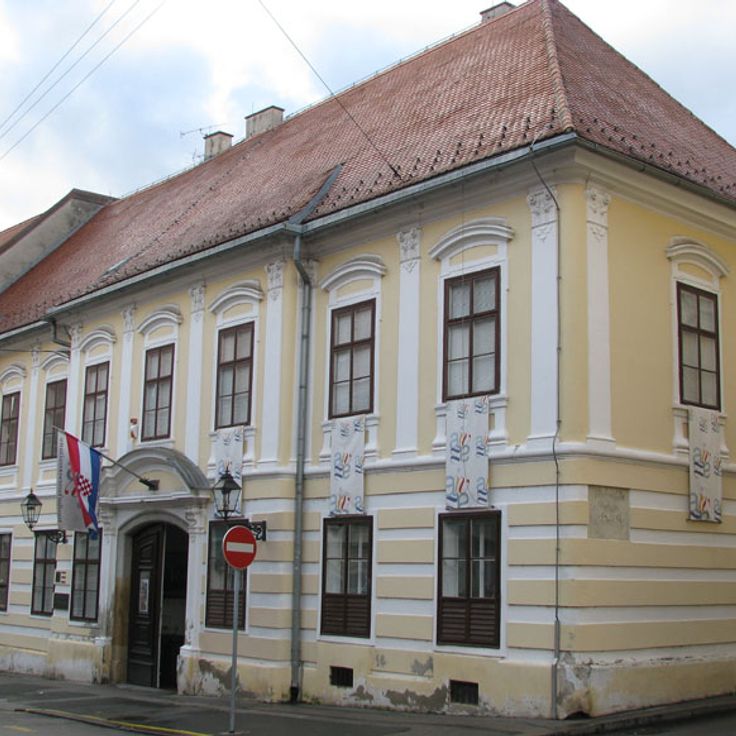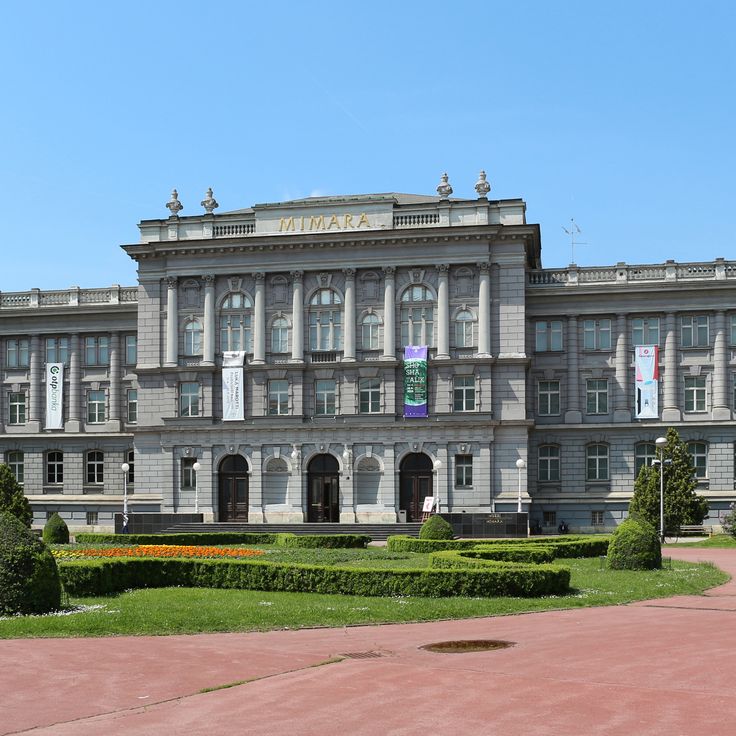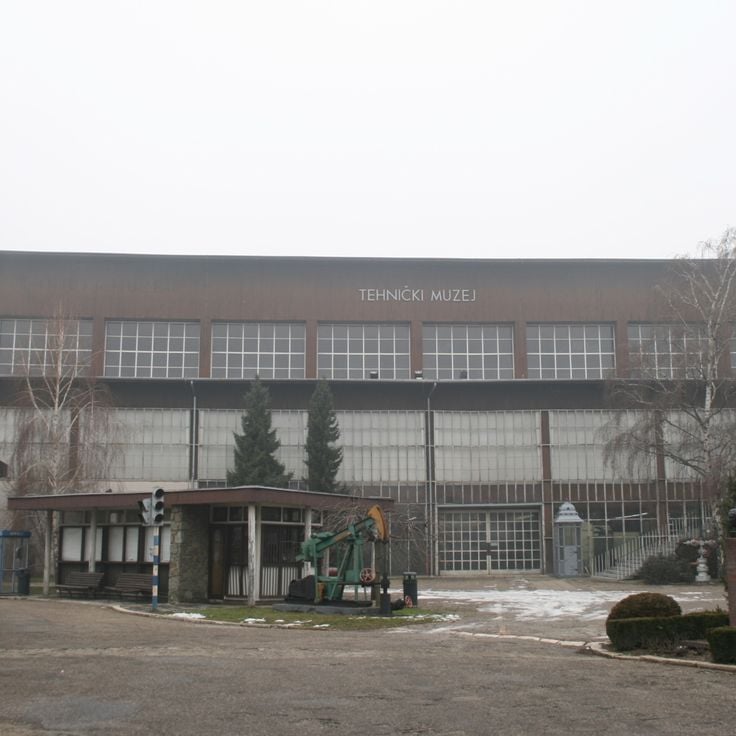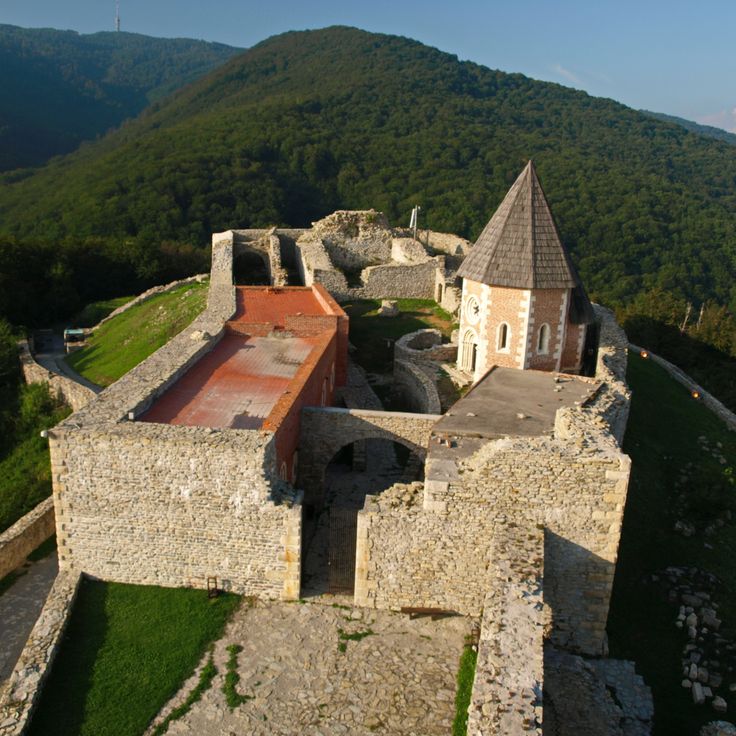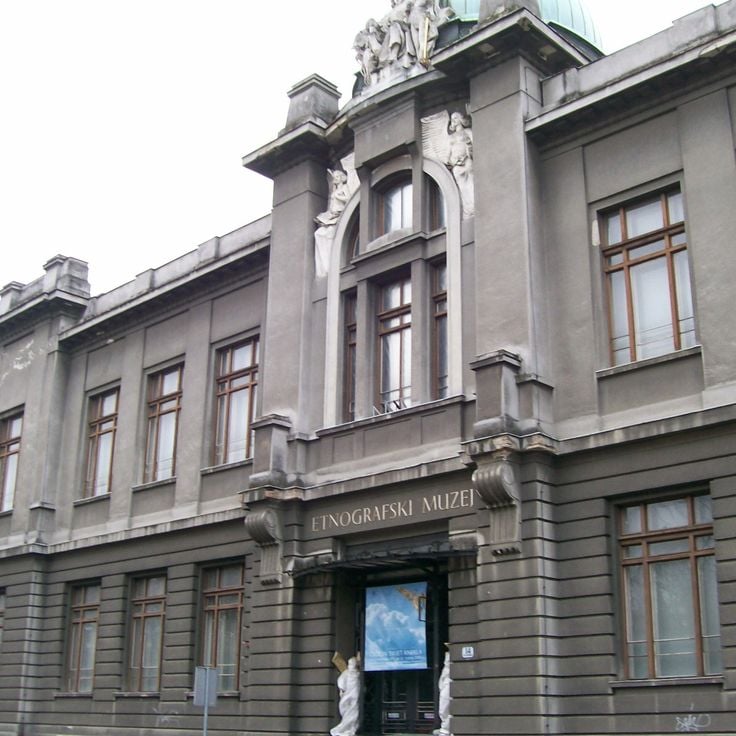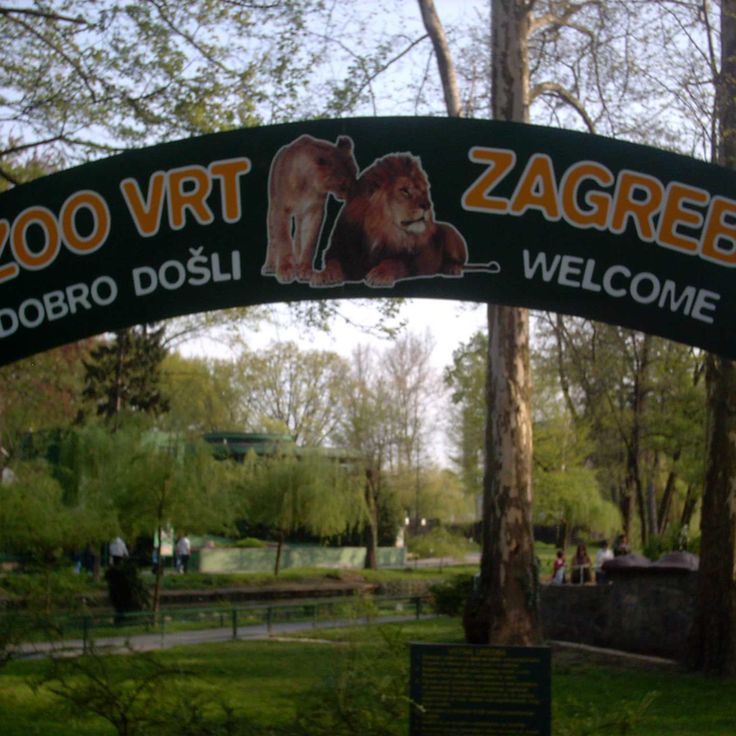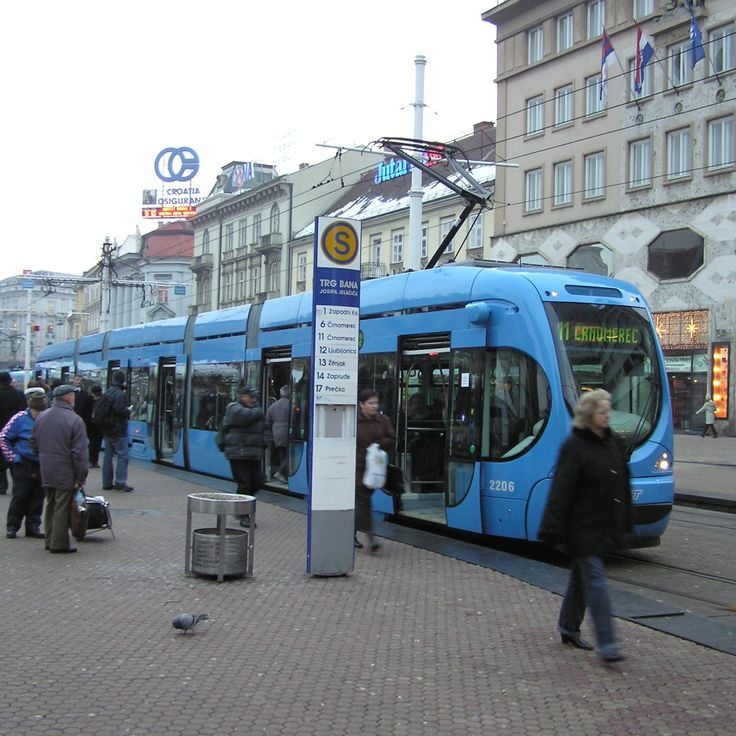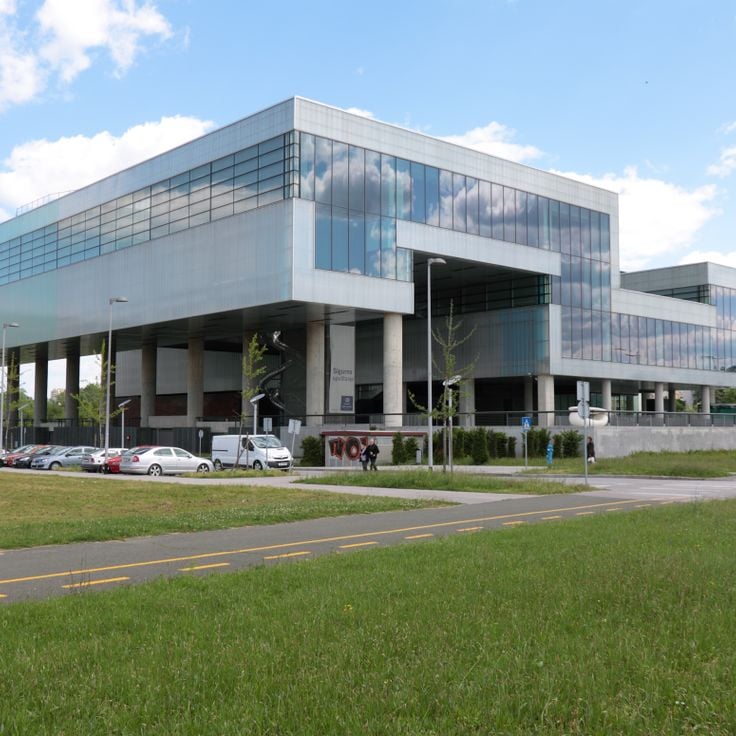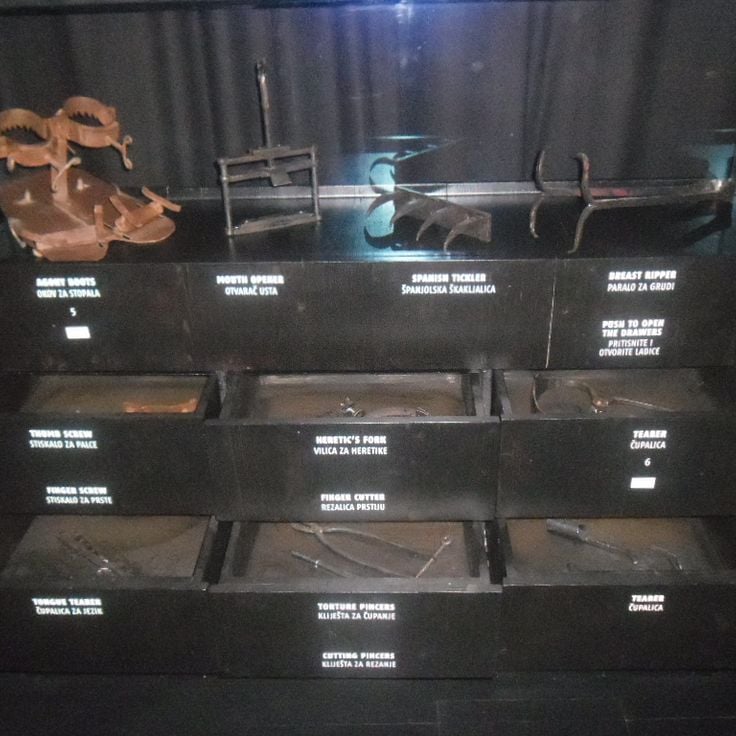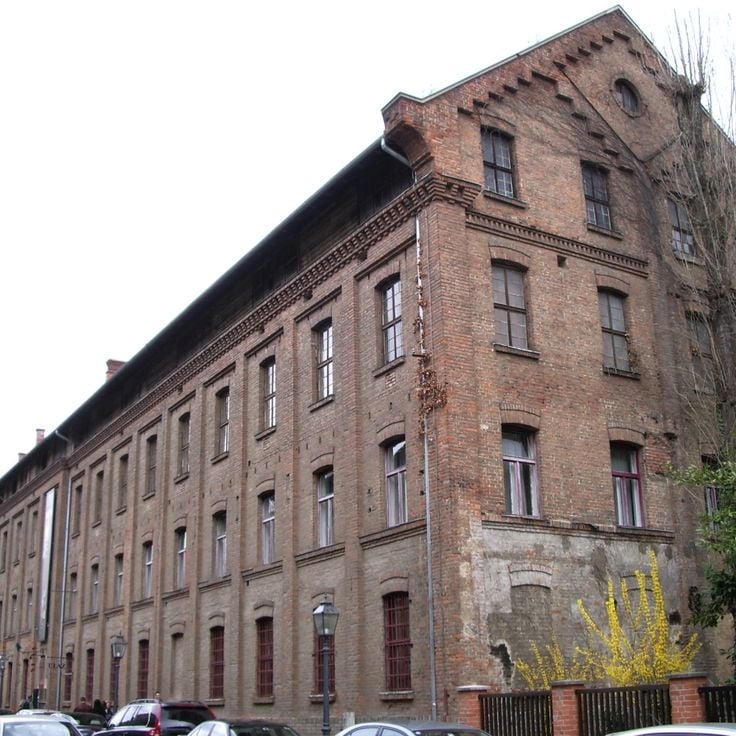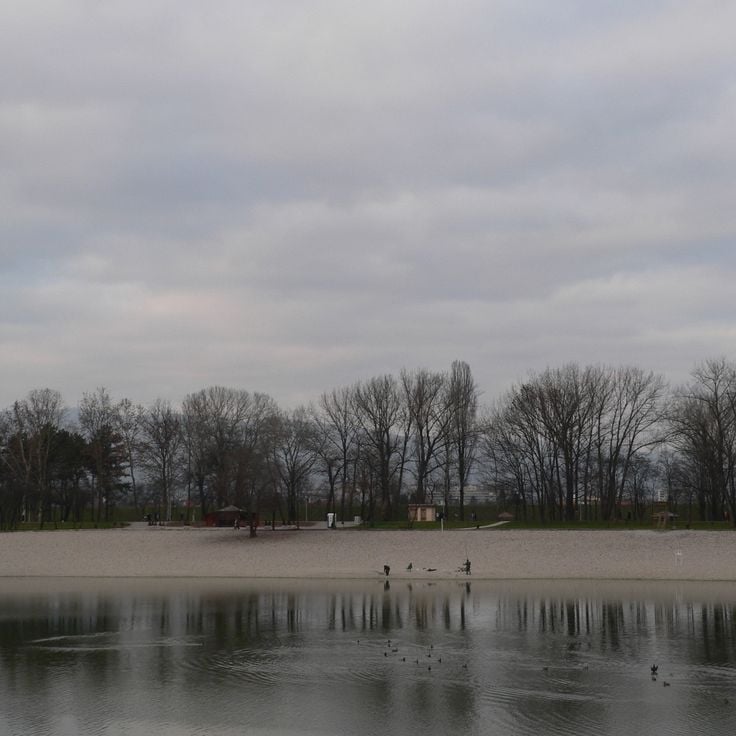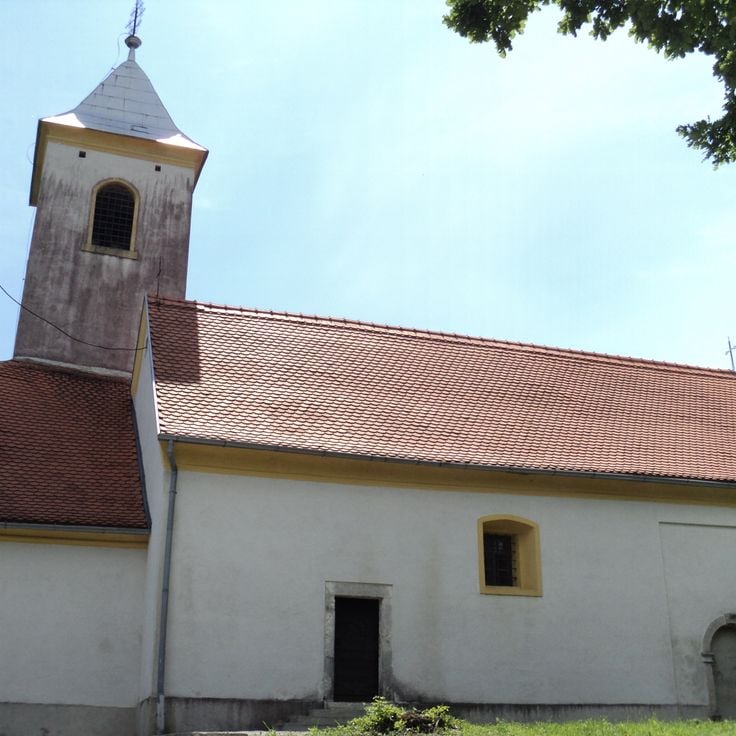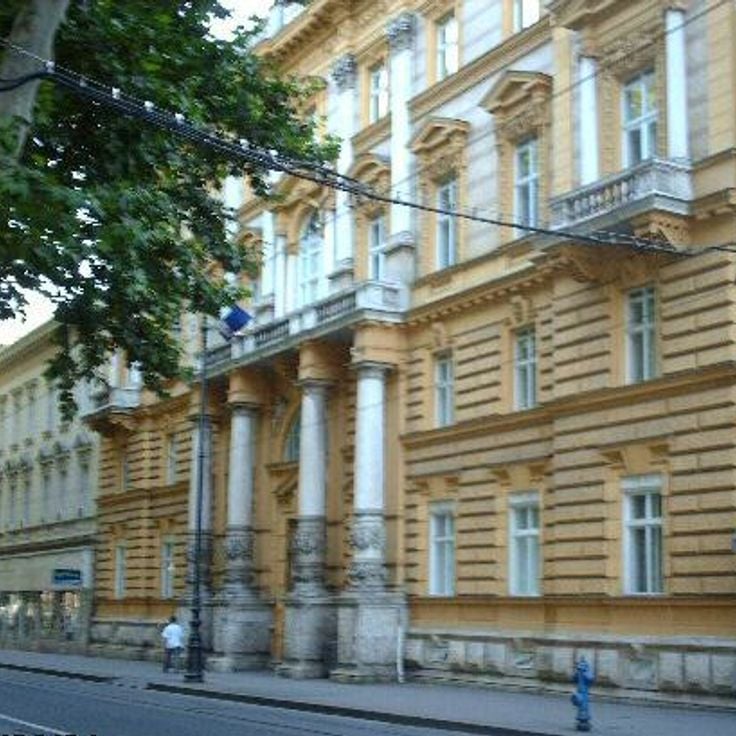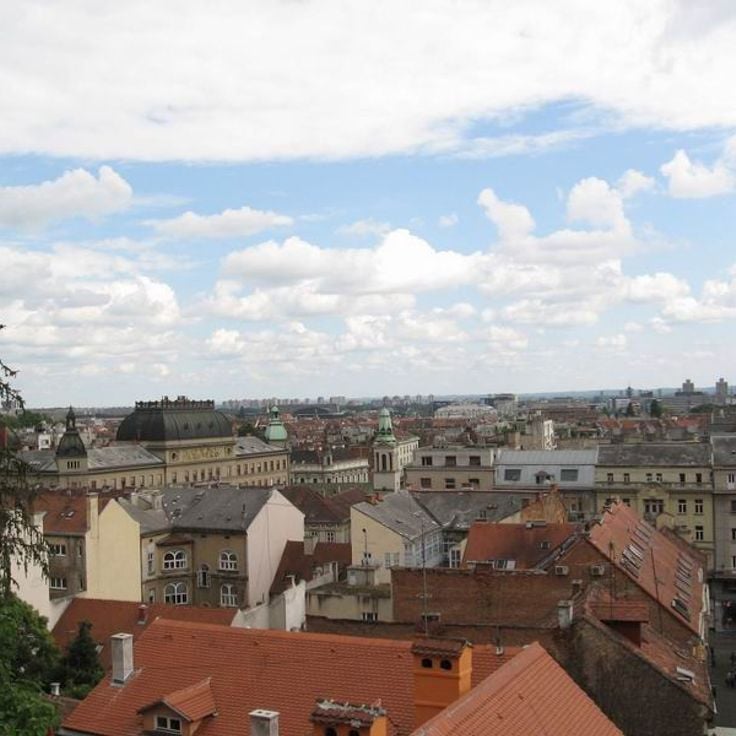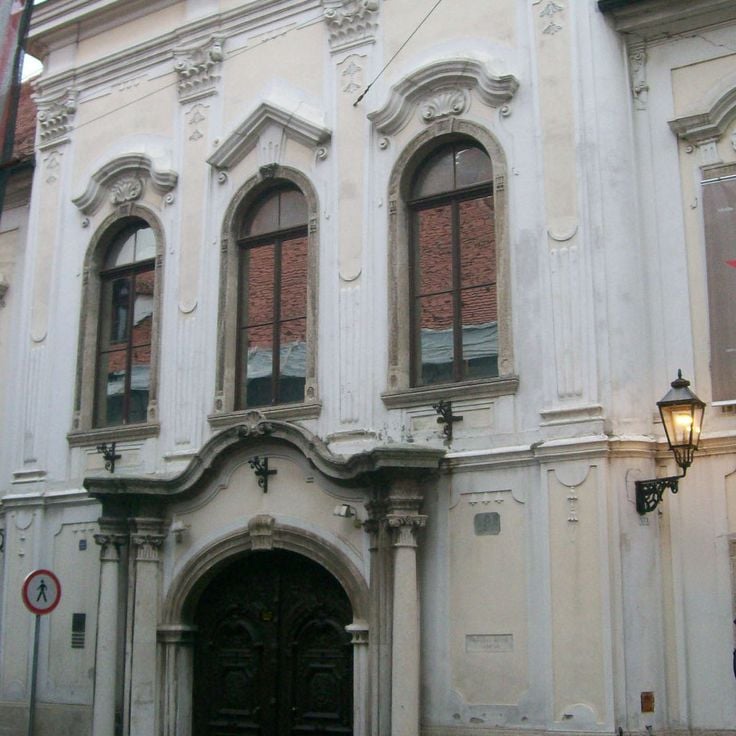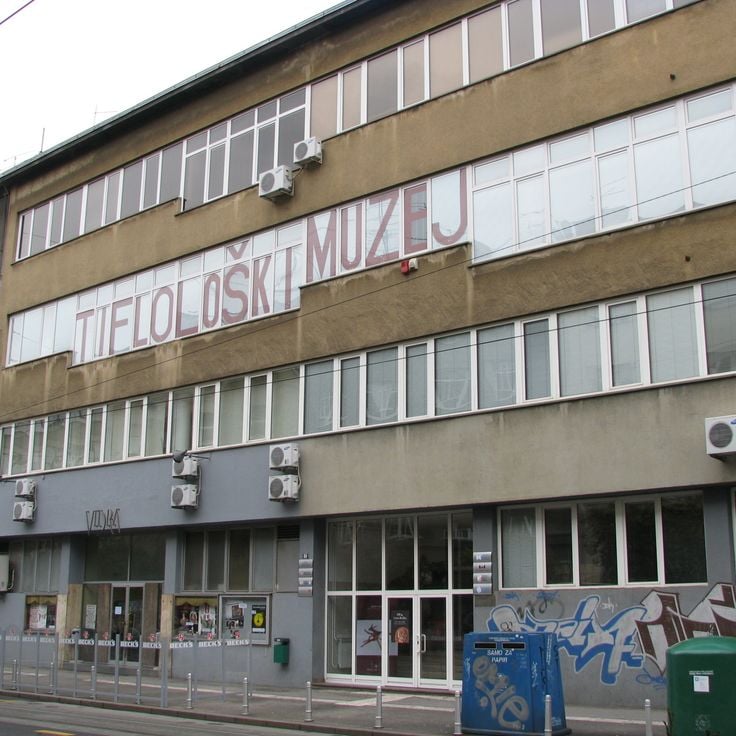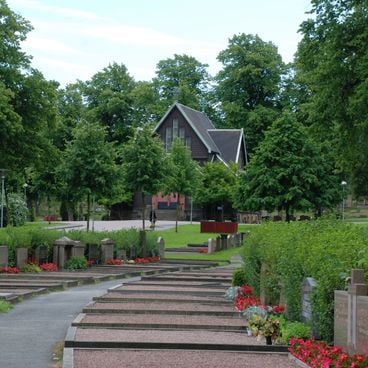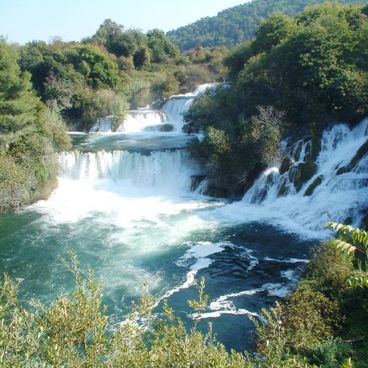Zagreb features an architectural heritage spanning from the Middle Ages to modern times. The Zagreb Cathedral dominates the city with its two neo-Gothic towers measuring 108 meters, while St. Mark's Church displays the city's historic coats of arms on its roof. The Stone Gate, a remnant of 13th-century fortifications, houses a chapel dedicated to the Virgin and Child. The Lotrščak Tower, an old medieval watchtower, still fires a daily cannon at noon. The city organizes its cultural offerings around several institutions: the Broken Relationships Museum exhibits an international collection of objects related to breakups, the Art Pavilion is housed in a building from 1898 dedicated to contemporary art, and the Grič Tunnel, a 350-meter-long shelter built during World War II, now serves as an exhibition space. Maksimir Park extends over 316 hectares with five lakes and a zoo, while the Botanical Garden has collected over 5,000 plant species over 4.7 hectares since 1889. Mirogoj Cemetery, designed by Hermann Bollé in 1876, combines neo-Renaissance arcades with funerary architecture.
Zagreb Cathedral has dominated the city skyline since the 13th century with its twin 108-meter towers. The neogothic structure underwent extensive restoration after the 1880 earthquake. The interior houses valuable religious artworks, including medieval frescoes and baroque altars. The facade displays detailed stonework featuring religious scenes and figures of saints. The original Romanesque building has been expanded and modified several times throughout the centuries.
St. Mark's Church stands in Gornji Grad, the upper part of the city. Built in the 13th century, it combines Romanesque and Gothic architectural elements. Its colorful tiled roof displays the coats of arms of Zagreb and the Triune Kingdom of Croatia, Slavonia and Dalmatia. The south portal dates from the 14th century and features fifteen sculptures. Inside, works by Croatian sculptor Ivan Meštrović can be found. The church serves as a parish church and is used for religious services.
The Museum displays personal objects from failed relationships, donated by people from around the world. Each exhibit is accompanied by a brief story that explains the emotional context of the breakup. The collection includes letters, photographs, gifts, and everyday items that once held special meaning. The museum was founded in 2010 and is located in the historic Upper Town of Zagreb. The exhibition addresses universal themes of love, loss, and human connections through tangible objects and personal narratives.
Mirogoj Cemetery opened in 1876 and is considered one of Europe's most significant burial grounds. The site covers 28 hectares at the foot of Mount Medvednica. The monumental arcades in Neo-Renaissance style, designed by Austrian architect Hermann Bollé, form the central architectural feature. The cemetery serves as the final resting place for Croatian figures from politics, culture and science. Among the graves stand numerous sculptures and elaborate tombs representing various artistic movements from the 19th century to the present day.
Maksimir Park covers 316 hectares in eastern Zagreb and was established in 1794 as the first public park in Southeast Europe. The extensive grounds include five artificial lakes, woodland areas with oak and beech trees, and a network of paths extending over 18 kilometers. Zagreb Zoo has been located in the southern section of the park since 1925 and houses approximately 275 animal species. Historical pavilions and the Bellevue viewing platform offer views across the landscape. The park serves residents and visitors as a recreational area for walking, jogging, and cycling.
The Lotrščak Tower is a 13th-century watchtower located in the Upper Town of Zagreb. Every day at precisely noon, a cannon is fired from this historic fortification, a tradition maintained since 1877. Visitors can climb the tower to reach its observation platform, which provides panoramic views over the rooftops of the old town, the surrounding neighborhoods, and the city extending toward the mountains.
This Art Pavilion was built in 1898 as a yellow building in the historic center of Zagreb. The institution features 600 square meters of exhibition space dedicated to contemporary art presentations. The building has served as a venue for rotating art exhibitions and cultural events since its opening. The pavilion's architecture combines functional exhibition rooms with the distinctive yellow facade that has become a recognizable feature of the building.
The Grič Tunnel was dug in 1943 during World War II beneath Grič Hill to protect Zagreb's population from air raids. This 350-meter underground passage connects Mesnička and Radićeva streets in the Upper Town. After decades of closure, the tunnel reopened to the public in 2016. It now serves as a pedestrian walkway and hosts art installations, exhibitions, and cultural events throughout the year. The constant temperature of around 15 degrees Celsius makes it a comfortable passage during hot summer months.
The Zagreb Botanical Garden was established in 1889 as a scientific institution of the university. It covers an area of 4.7 hectares in the city center and houses more than 5000 plant species from different climatic zones. The garden includes several greenhouses for tropical and subtropical plants, a central pond with aquatic vegetation, and thematically organized sections. The garden serves botanical research and the conservation of rare plant species.
The Stone Gate is the only remaining gate from Zagreb's medieval fortifications. Built in the 13th century, this passage connects the Upper Town with the surrounding districts. Inside the gate's archway stands a small chapel housing a painting of the Virgin Mary with Child. After a fire in 1731, this painting survived undamaged, leading to the development of local devotion. Today, believers come here to light candles and hang plaques of gratitude. The chapel serves as a place of prayer within the busy Old Town and reflects the city's religious heritage.
The Dolac Market stands in the heart of Zagreb and has served as the city's central marketplace since 1930. This open-air market offers a wide selection of fresh regional produce, including fruits, vegetables, meat, cheese, and dairy products. Local farmers and vendors display their goods under the characteristic red umbrellas. The market sits directly above the cathedral and connects the Upper and Lower Town areas.
The Croatian Museum of Naive Art preserves a collection of 1850 works from the 20th century. The displayed pieces come from Croatian and international artists who received no formal training. The museum documents the development of naive art in Croatia and presents paintings, sculptures and drawings by various creators. The collection includes works from the Hlebine School as well as other movements within this art form.
The Muzej Mimara opened in 1987 and houses the collection of Ante Topić Mimara, donated to the Croatian government. The museum displays European paintings from various periods, including works attributed to Raphael, Velázquez, Rembrandt, and Goya. The collections also feature archaeological objects from ancient Egypt, Mesopotamia, and Persia, medieval sculptures, Venetian glassware, and Asian porcelain and ceramics. The building itself, a 19th-century neo-Renaissance structure, originally served as a gymnasium before its conversion into a museum.
The Nikola Tesla Technical Museum displays an extensive collection of historic vehicles, machinery and scientific instruments from different periods of technical development. The exhibitions document advances in areas such as transport, energy, communication and industry, providing an overview of the technological history of Croatia and Europe.
Medvedgrad is a 13th-century fortress perched on Mount Medvednica above Zagreb. The structure was built between 1249 and 1254 to protect the city from Mongol invasions. From its walls, visitors can see panoramic views of Zagreb and the surrounding forests. The fortress houses the Altar of the Homeland, a national memorial site. Visitors can explore the preserved towers, walls, and inner courtyard. The fortress is accessible via hiking trails or by car.
The Ethnographic Museum of Zagreb has been collecting traditional clothing, textiles and objects from Croatia and other continents since 1919. The collection documents rural and urban life as well as craft traditions from various Croatian regions. The museum also displays ethnographic objects from Europe, Asia, Africa and America. The exhibitions present folk costumes, ceramics, musical instruments and tools. The Neo-Renaissance building was designed in 1903 by architect Vjekoslav Bastl.
Zagreb Zoo is located in Maksimir Park and has operated since 1925. Spread across 7 hectares, it houses over 300 animal species from different continents. The zoo features several thematic sections with mammals, birds, reptiles and amphibians. It participates in conservation programs and offers educational activities for visitors of all ages. The naturalistic design of the enclosures allows observations in a park setting.
The Place Ban Jelačić has served as Zagreb's central square since its establishment in 1866, connecting the Upper and Lower Town. This busy square features the equestrian statue of Josip Jelačić, the 19th-century Croatian Ban, erected in 1866. The square functions as a major transport hub with several tram lines and serves as a meeting point for residents. Shops, cafés, and historical buildings from different periods surround the square. The Place Ban Jelačić marks the starting point for visits to both parts of the city and remains an important landmark in the Croatian capital.
The Museum of Contemporary Art opened in 2009 and displays Croatian and international artworks from the 20th and 21st centuries. The collection includes paintings, sculptures, photographs and video installations. The building spans four floors with exhibition spaces, a library and a multimedia center. Rotating exhibitions present works by Croatian artists alongside international contemporary positions.
This museum displays a collection of historical torture instruments and documents the evolution of punishment methods from the Middle Ages to the modern era. The exhibition includes various tools and devices used for physical punishment and interrogation. Information panels explain the historical context and legal frameworks under which these practices were applied. The Museum of Torture is located in the historical center of Zagreb.
The Zagreb Glyptotheque was established in 1937 and houses an extensive collection of plaster casts of classical and European sculptures. The museum displays reproductions spanning from antiquity to the Renaissance, including works by Greek and Roman masters as well as copies of Michelangelo's creations. The Glyptotheque serves as an educational institution, allowing visitors to study the evolution of sculpture across different eras. The exhibition includes several hundred pieces arranged chronologically, providing an overview of the major movements in European plastic arts.
Bundek Park extends across the southern part of Zagreb and provides residents and visitors with various recreational facilities. The park features an artificial lake used for swimming during summer months. Sports fields for basketball, volleyball and football are available. Children's playgrounds with different equipment have been installed. A network of paths crosses the green spaces and allows for walks or bicycle rides. Benches and lawn areas invite relaxation. The park underwent extensive renovation and modernization during the 2000s.
The Chapel of Saint George is located within the Medvedgrad fortress on Mount Medvednica, overlooking Zagreb. Built in the 13th century as part of the fortress complex, this chapel served as a place of worship for the garrison. The chapel preserves fragments of wall paintings from that period, which represent some of the oldest surviving medieval artwork in the region. These paintings depict religious themes and provide insight into the artistic techniques of the Middle Ages. Medvedgrad fortress was constructed in the 13th century as a defense against Mongol invasions, and the chapel formed an integral part of this defensive structure. Today, the chapel is part of the archaeological and historical site that educates visitors about medieval Croatian history.
The Archaeological Museum of Zagreb displays a collection of 450,000 objects spanning different periods and cultures. The exhibition includes Egyptian mummies, Roman stone fragments and inscriptions, as well as prehistoric finds from the region. The museum documents Croatian history from prehistory through the medieval period. The collection also contains Greek vases, numismatic objects, and medieval sculptures. The 19th-century building houses a specialized library with archaeological literature.
Donji grad forms the heart of Zagreb, stretching between the main railway station and the old town. This district developed during the 19th century following urban plans that emphasized wide avenues, public squares, and green spaces. Key institutions include the Croatian National Theatre, the Archaeological Museum, and the Academy of Sciences and Arts. The Zrinjevac promenade and the Botanical Garden provide recreational areas within the urban fabric. Streets are lined with neoclassical and Art Nouveau facades housing shops, restaurants, and administrative buildings. The neighborhood combines governmental functions with cultural life, contrasting with the medieval upper town.
The Croatian History Museum presents collections documenting the country's history from medieval times to the present day. The exhibited objects include archaeological finds, weapons, textiles, coins, and historical documents. The museum offers a chronological overview of Croatia's political, military, and social developments through different periods.
The Museum of Blindness in Zagreb provides visitors with educational exhibits and sensory experiences that illustrate the daily lives of blind and visually impaired individuals. This institution offers practical demonstrations and interactive activities that allow visitors to experience everyday situations from the perspective of people with visual impairments. The museum features tactile displays, orientation aids, and informative presentations about various assistive tools and techniques used by the blind community.
The Zagreb Observatory was established in 1903 and has served astronomical research and education for over a century. The institution houses a significant collection of historical telescopes and astronomical instruments from different periods. Visitors can participate in regularly scheduled sky observations, where planets, stars and other celestial objects are viewed through the telescopes. The observatory offers guided tours of its facilities and explains the development of astronomy in Croatia. Scientific staff continue to conduct research work and engage in teaching astronomical knowledge to schools and the interested public.
